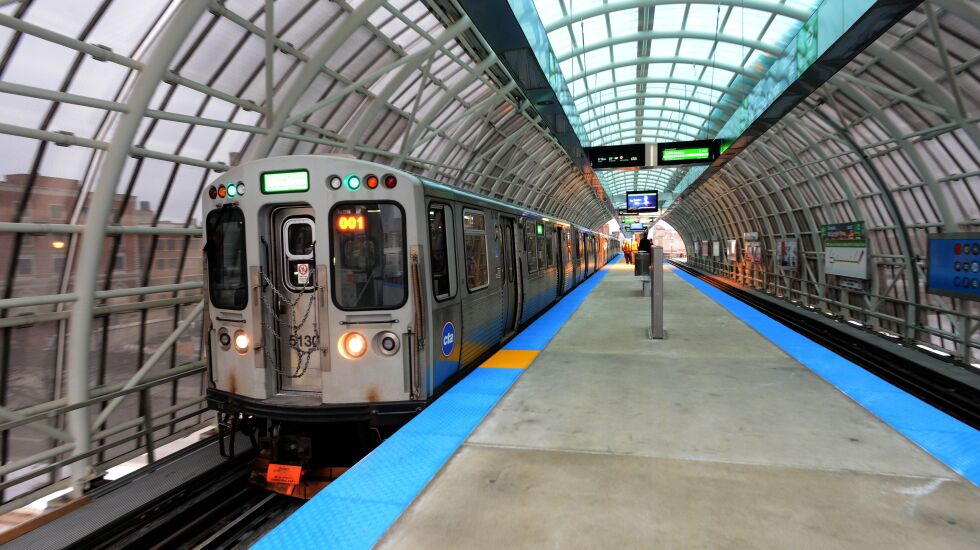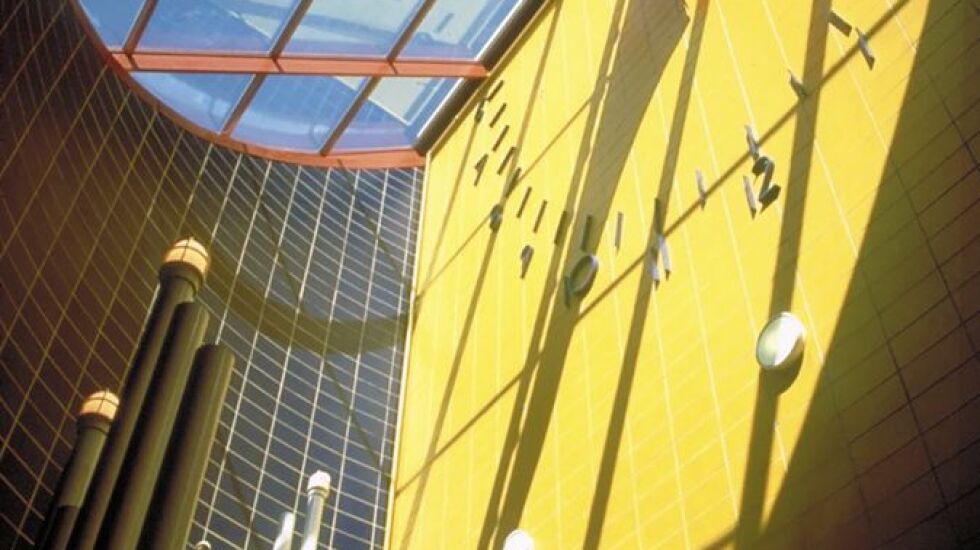
Here’s something to do on a crisp, sunny morning, maybe not too long after daybreak: Check out the Loop skyline from the CTA’s Cermak-McCormick Place stop on the Green Line.
The 8-year-old station is an impressive facility, with its glassy street level entrance and the silver tube that shelters the elevated platform.
But stand on that platform and look north. The tube forms an arch-like curve that nicely frames the architectural expanses of downtown.
It’s an L of a view. A treat for riders. All for the price of a train ride.
The station was designed by Carol Ross Barney, whose firm, Ross Barney Architects, has turned out this kind of smart, thoughtful urban design since 1981.
And last month, Barney got something in return for her decades of good work: the prestigious Gold Medal from the American Institute of Architects.
Barney’s firm largely specializes in government projects, which makes the win especially important. The award gives Barney the honor she deserves while underscoring that well-designed public buildings and transit infrastructure are as vital to the city — and its architectural prestige — as gleaming skyscrapers or sprawling mega-developments.
Maybe even more so.
“My whole practice — my whole career — has been focused on stuff that generally doesn’t get ‘designed,’” Barney said. “Or people think, ‘Oh well, we can afford not to put much thought into that,’ like, train stations or infrastructure. [But] there isn’t anything that doesn’t need a design. Design is sort of like a superpower. It’s a secret weapon. Especially when you’re making cities [better].”
‘An architect for the people’
The AIA Gold Medal jury called Barney “an unrivaled architect for the people [whose work] exudes design excellence, social responsibility, and generosity.”
The Riverwalk certainly bears witness to that. Chicagoans historically kept their distance from the river. But Barney’s work turned the waterway’s downtown edge into an attractive and active space with restaurants, a path, and places to sit and relax.
“I think [the Riverwalk] has an intimacy that good public spaces have to have,” Barney said. “I think it has a variety of experiences that make it interesting, time after time after time.”

Barney’s designs also include libraries, other L stations, the colorful Little Village Academy (the school’s stairway sundial is a treasure), and the Searle Visitor Center at Lincoln Park Zoo.
She also designed the Oklahoma City federal building that replaced the Alfred Murrah government complex that was destroyed in a deadly 1995 truck bomb attack by terrorist Timothy McVeigh.
And the work continues. Barney and architect RaMona Westbrook of Brook Architecture were selected in 2022 to design the long-delayed $40 million DuSable Park south of Navy Pier and east of DuSable Lake Shore Drive.
Barney’s firm has also been picked to design a new 79th Street station on the Metra Rock Island Line, replacing a stop that was eliminated in the late 1970s.

Meanwhile, she’s been thinking about the city's plans to revive LaSalle Street by turning some of the financial district’s classic office buildings into residential units.
“Residential is great, but what about parks and schools?” Barney said. “I mean, could you imagine what a great school you could make that has the Art Institute and the Museum Campus as resources in their front yard?”
‘Design is more than how something looks’
Barney, 73, is the first Chicago architect to win the Gold Medal since Mies van der Rohe snagged one in 1960.
She’s also the first living woman to win the award individually. Julia Morgan, who died in 1957, won the medal in 2014, and Denise Scott Brown was honored with her husband, Robert Venturi, in 2016, and Angela Brooks of Brooks Scarpa took home the prize in 2022 with her husband Lawrence Scarpa.
“When I heard Carol had won, I immediately thought of the word leader,” Brooks said.
“Design is more than how something looks,” she said. “Design is … how we use space, how we travel through it, how we feel in it. It’s about advocacy for better public spaces, ecological stewardship in landscapes — a cross-disciplinary practice that she leads, that spans from fish habitats to social justice in our cities.”
Lee Bey is the Chicago Sun-Times architecture critic and a member of the Editorial Board.
Want to write a letter to the editor or submit an op-ed for the Sun-Times? See our guidelines.







